How to get started and build a regular disciplined practice
This is it. No excuses. Today is the day you start work on that idea that’s been brewing away for months!
So you gather your fabrics. You gather your threads. You grab your pins and your needles and…and…and…
And then what?
The symptoms begin.
The first marks just won’t come.
So you open your sketchbook to work through some ideas.
But the blank page just stares back at you.
So you make yourself a cup of coffee.
And you browse Pinterest for inspiration.
And one click leads to another.
You comment on that pic of your friend’s cat – sooo cute!
And now you fancy another coffee.
But you’ve run out of milk.
So you nip to the shop…
And clearly today is not the day!
Diagnosis? Artistic paralysis!
By the way if you prefer to watch rather than read, scroll down or click here to check out the video we made for Facebook to go along with this article.
If not now, when?
Every day you don’t make your textile art a priority is a day further away from ownership of your techniques. A day further away from developing an artistic voice that is clear, strong and original. A day further away from adding beauty, creativity and connection in the world.
Deep breath. The first step on the road to recovery is to forgive yourself. You are not alone. In all walks of life there are talented people with untapped creative potential resisting a regular, disciplined practice.
It’s hard to believe that multi-award winning fiber artist Susan Lenz, who now has a string of successful solo shows to her name, was one of those people.
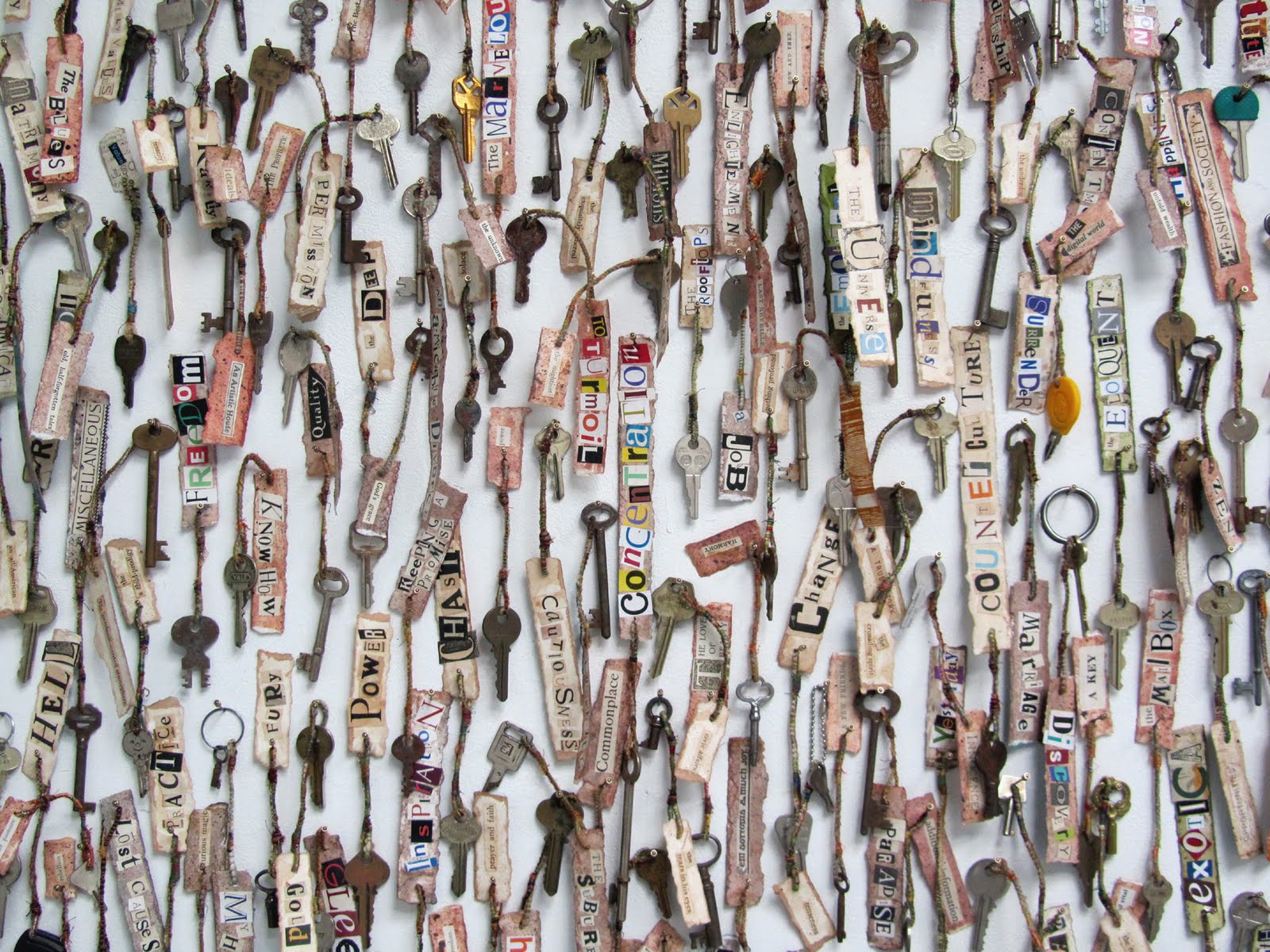
But back in 2002, Susan was utterly miserable.
She longed for a more productive practice. Actually, she longed for any kind of practice. But with bills to pay, giving up her “day job” to focus on her art was not an option.
She wasted a lot of time feeling sorry for herself. Feeling jealous of artists who had freedom and money. Feeling guilty that she wasn’t in the studio.
Whenever she tried to be creative, instinct was overpowered by negativity. What was the point?
The revelation came one day at an event held by another artist. An artist who had the “luxury” of dedicating herself exclusively to a full-time practice.
“It happened to be during some ritual, a bonfire set ablaze by the artist, which was supposed to carry personal dreams and prayers to heaven.
I wasn’t particularly thrilled with the notion. Almost in silent defiance, I said to myself, “Okay, God… Hear my prayer. I want to be an artist”.
Bam! A thought hit me like a lightening bolt, a true moment of epiphany”.
Susan suddenly realised why she was feeling such resentment and envy. She couldn’t stand that the bonfire artist was living an authentic life. And she was not.
“I got a time card. I kept track. With the help and support of my husband who started doing his share of the household chores, I gradually increased my studio time. Eventually, this new schedule became a habit”.
Not only did Susan overcome her aversion to getting down to work, nowadays she enjoys a disciplined, fruitful studio practice and a rewarding artistic career that has enabled her to ditch the “day job”.
What’s stopping you?
Whatever your aspirations for yourself and your art, one thing is for sure; they won’t become reality if you don’t get started.
So once you’ve forgiven yourself for being human, why not take your lead from Susan and identify exactly what’s keeping you “stuck”.
In other words, to prescribe a cure for artistic paralysis, you first need to know the cause.
8 stumbling blocks to getting started
1. Fear of failure
Your inner critic tells you you’re not creative or talented enough. That what you make won’t meet your expectations. That other people will hate it and mock you for daring to try.
Remember your inner critic is a bully. A bully whose number one aim is to make you fear failure so intensely that you never even begin.
Will you let the bully win? Or get to work in spite of her?
Jean Draper, Textile artist and author of Stitch and Structure, has reframed her process to this end:
“If I am working and thinking, all is ok, whether I’m ‘succeeding’ or not”.
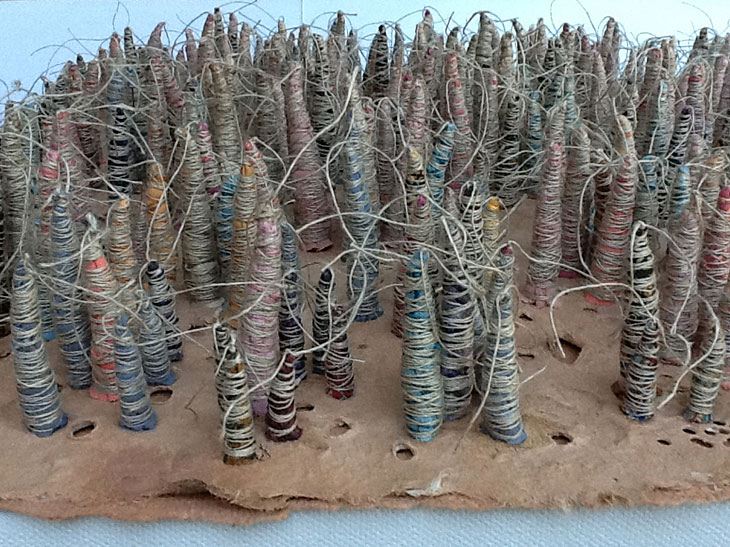
2. Lack of time
Finding windows of creativity can be tough. Holding down a job, looking after the kids, caring for an elderly relative. These things are non-negotiable and leave very little time for you and your art, so why bother?
But isn’t doing something better than doing nothing? Small steps are still steps after all.
3. Lack of money
Making art can be expensive. You have a specific outcome in mind, which requires materials and tools you just can’t afford. Or you need a special skill but don’t have the money to take the class.
True, compromising your artistic vision can be painful. But have you considered that finding an alternative path could actually make you more inventive? And the end result more original?
Barbara Cotterell, one of the founding members of the Material Space Textile Group, told us:
“I always prefer to work with found materials, mostly from around the home. I try hard not to buy anything new. Even the wire I try to get from the scrap yard.
Everything is about exploration of these materials”.
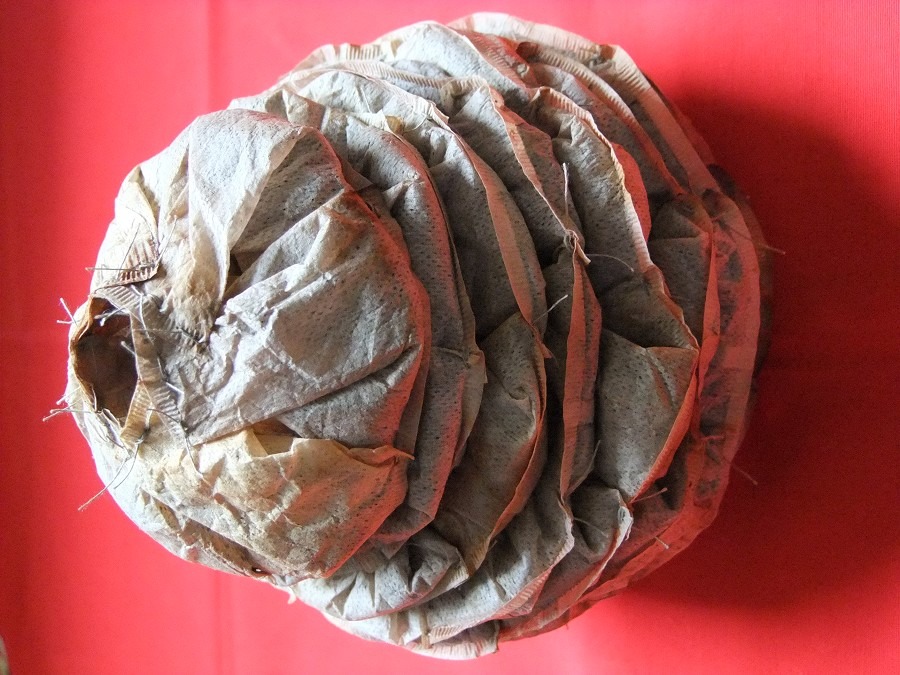
4. Total freedom
Having all the time in the world to work on your art practice sounds like heaven, right? But, if you’re not careful, total freedom can lead to total inactivity.
When there are no deadlines, nothing feels urgent and time fritters away.
Structure can be a great motivator.
Shannon Weber, whose textile sculptures have been featured in 40 books worldwide, is a creature of habit.
“Embracing the discipline of a routine has led to a very productive and rewarding creative practice”.
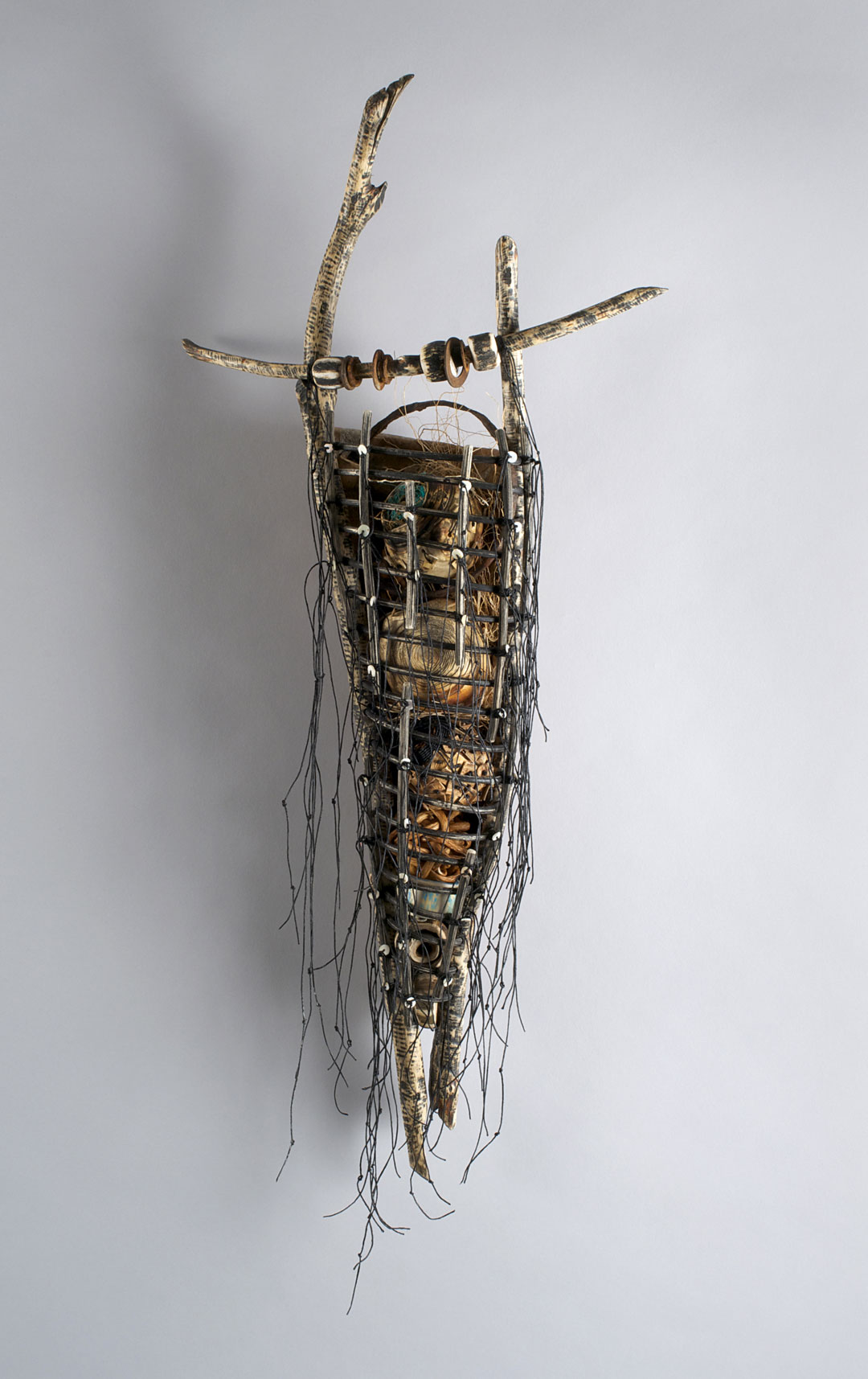
Caged objects woven, stitched, carved, beaded of Pacific Bullwhip sea kelp, reclaimed beach metals
5. Waiting for inspiration
Have you ever told yourself you can’t work because you don’t feel inspired? You’ll start to make when the muse appears. That’s when you know what you’re going to create will be truly meaningful and unique.
Maybe it’s time to take a leaf out of the late author Octavia Butler’s book:
“Forget inspiration. Habit is more dependable. Habit will sustain you whether you’re inspired or not.”
6. No clear action plan
Without knowing how your time will be spent, a lack of direction and enthusiasm can become a real handicap.
Ali Ferguson, who runs The Purple Thread Shed in Scotland told us:
“Setting goals, planning and making lists is essential to my practice.
I write things down because I find it easier to plan when I can actually see what needs to be done”.
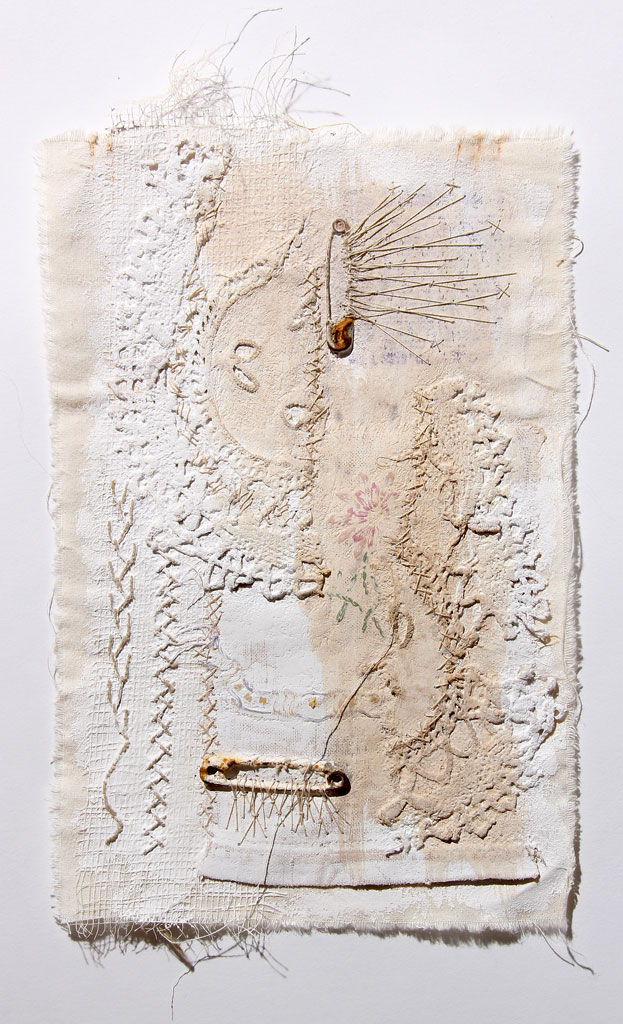
7. Seeking instant gratification
One of the tough things about the creative process, particularly when working with textiles, is that it can be a long road. The work is often arduous and repetitive. And progress can be slow.
Much easier to check Facebook. Much more fun to watch the video of Donald Trump being spray-tanned for the 10th time (It’s weirdly addictive – trust me!).
There will always be less resistance to a quick fix than to getting down to work. But ultimately which will offer deeper rewards?
8. Procrastination
Re-arranging your workspace. Flicking through the latest edition of your favourite textile magazine. Having endless debates with yourself about exactly which thread to use.
All these things feel like you’re working and they do have their place. But beware of using them as delaying tactics.
Are you making excuses?
I don’t want to negate how debilitating some of these stumbling blocks can be. An extremely harsh inner critic for example can cause crippling anxiety. And a particularly demanding job can leave you so drained that it’s impossible to function creatively.
But often, the simple act of recognising what’s keeping you stuck is the first step to creative health.
Next, you need a prescription. A course of action.
Exactly how you attack your own particular strain of artistic paralysis will vary from artist to artist, but the following 3 tips should help you come up with a plan.
3 tips for getting started
1. Make it manageable
You’ve probably heard pop psychologist Malcom Gladwell’s theory that to become world class in any field takes 10,000 hours of “deliberate practice”. 10,000 hours!!! That’s a pretty overwhelming thought. And nothing will perpetuate inaction more effectively than feeling overwhelmed.
And what if you’ve discovered your passion for textile art later in life? Theories like Gladwell’s can feed negative beliefs like “I’ve left it too late” or “I’ve missed the boat”.
But how about coming at it from a slightly different angle?
To begin with, forget about mastery and focus on what you can achieve now, in this moment.
Set yourself small creative tasks that can be carried out in a short amount of time. Find quick ways of exploring an idea or simple exercises to get going with a design. And even if you only complete that one small task, it’s been a good day. You started!
62 Group member Isobel Currie told us she breaks every project into tiny chunks. That way she feels a sense of progression.
And with progression comes momentum.
You can gradually become more and more ambitious as you find more and more momentum in your practice.

2. Keep it consistent
Fiber artist Leisa Rich, who has work in the permanent collection at The Dallas Museum of Art, gives this sound advice:
“Make work. Make that work constantly.
Even if you hate what you already completed or are working on, it is a stepping stone to something that will eventually be great.
Re-work things. Tear them up if need be and use them differently.
Push yourself, always.
Make the work”.
And author of Creative Strength Training, Jane Dunnewold, compares the artist’s practice to an athlete’s training regime.
In simplistic terms, if an athlete trains every day for a year, their skill, speed and stamina will improve. If an artist makes every day for a year, they’ll be braver with their techniques, start to push boundaries and their voice will strengthen.
If the thought of working every day is too much, work every other day. Or once a week. But make it regular and consistent.
The more you work, the more familiar mark making will be and the easier you’ll find it to get started the next time.
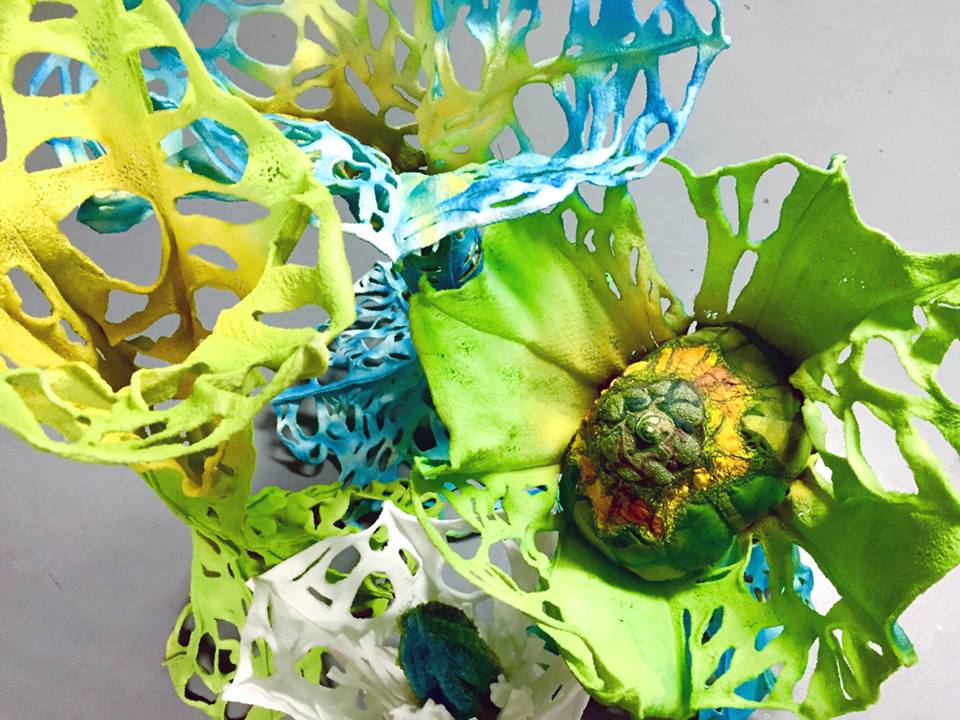
3. Know where you’re going and how you’ll get there
When you sit down to work, set a goal. Remember, don’t be too ambitious to begin with. Make the goal achievable. That way you’ll know your destination.
Lisa Solomon, author of Knot Thread Stitch, keeps herself motivated with rewards.
“If I can get to 100 french knots today I can go get a cupcake with my daughter.”
And make a plan of how you’ll achieve that goal.
Think about working deep rather than broad. If you try to incorporate lots of different techniques and materials into your project, you’re likely to become overwhelmed very quickly and be tempted to give up.
Whereas if you challenge yourself to achieve your goal using a limited number of stitches and threads, the journey becomes much clearer and more doable.
Does having a plan mean you can’t deviate from it? Absolutely not! Your plan will empower you to get started. But after that, if you find yourself in a state of flow and your instinct tells you to take a new direction, go with it. That’s when the magic happens.
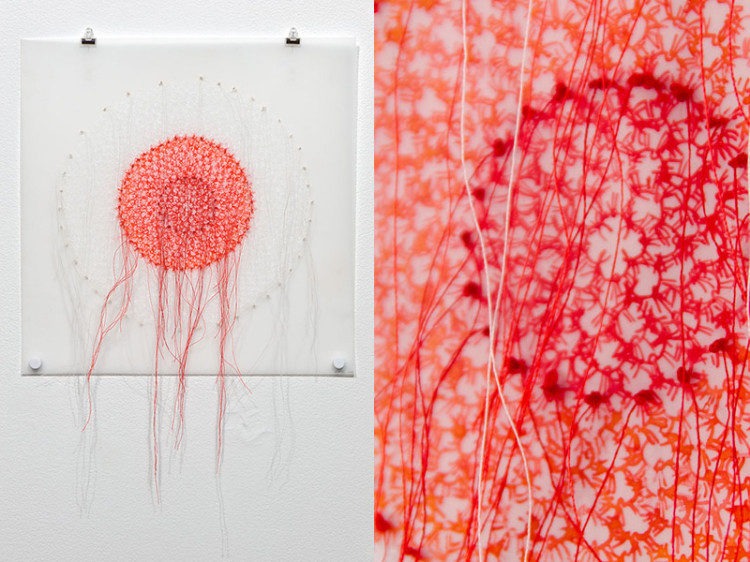
One possible cure for artistic paralysis is to take the pressure off. Start small and build gradually.
Don’t expect to make a masterpiece. Don’t even expect to make something you deem to be good.
Just expect to start.
Check out the Facebook Live session we did as a follow-up to this article by clicking play on the video below.
What holds you back from getting started and building a regular disciplined practice? Leave your questions and concerns in the comments section below and we’ll try and help out.
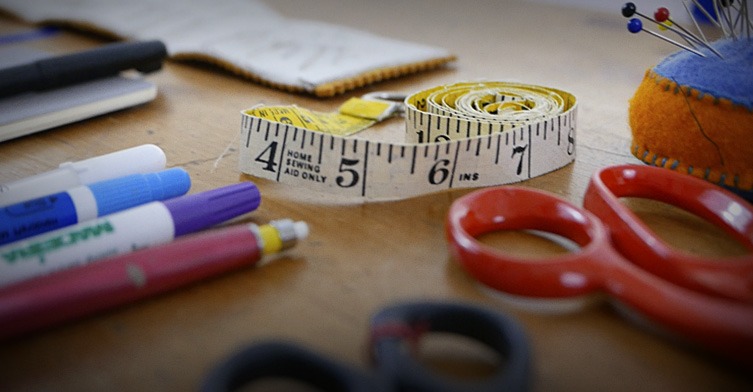
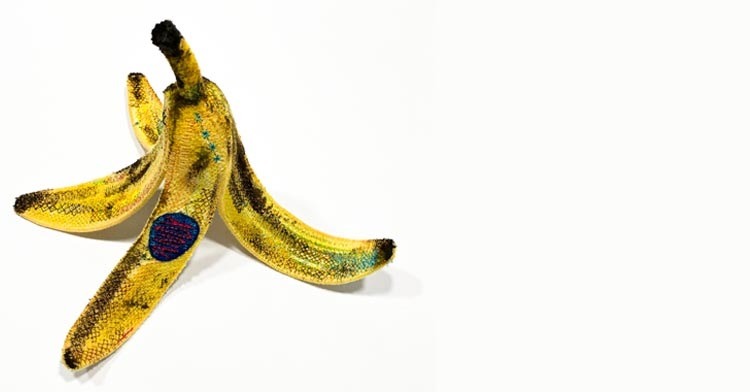
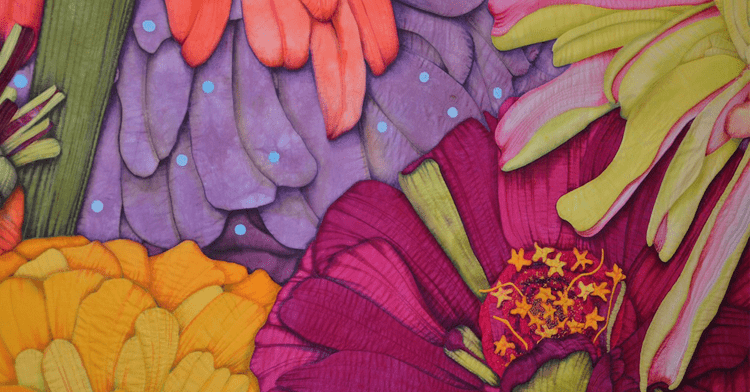
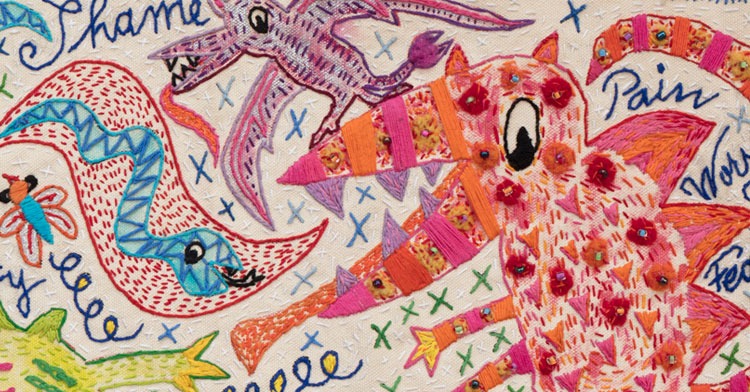
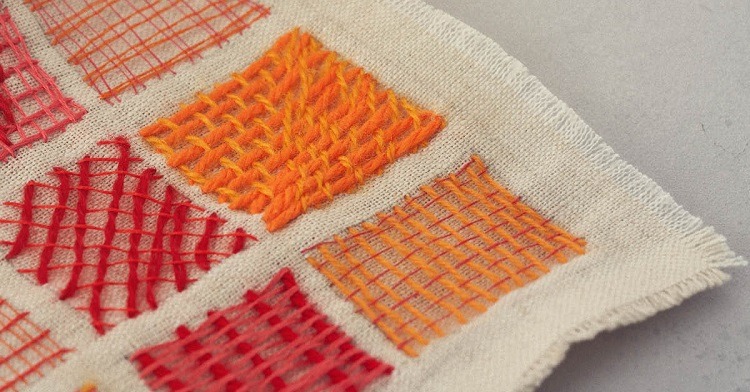
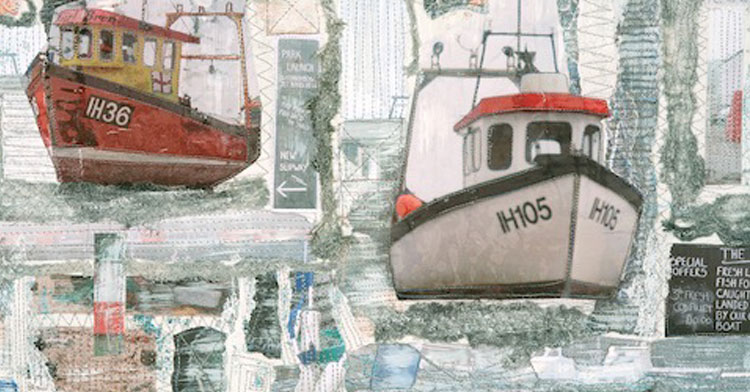

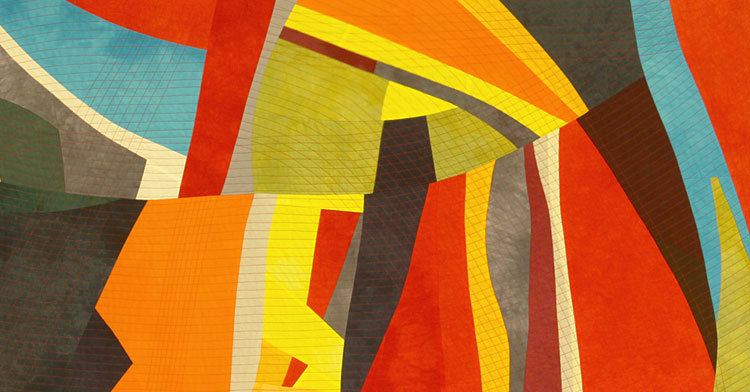
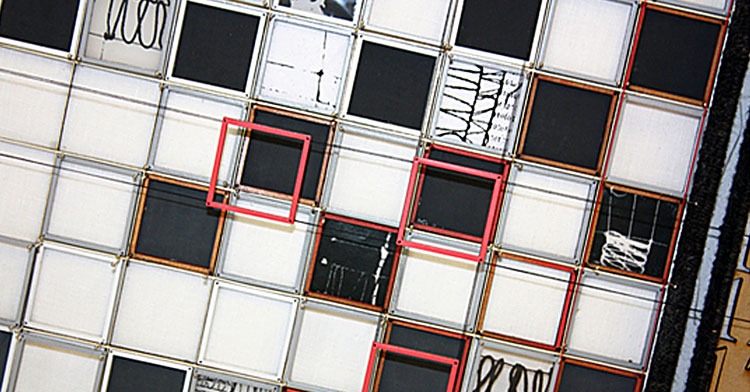
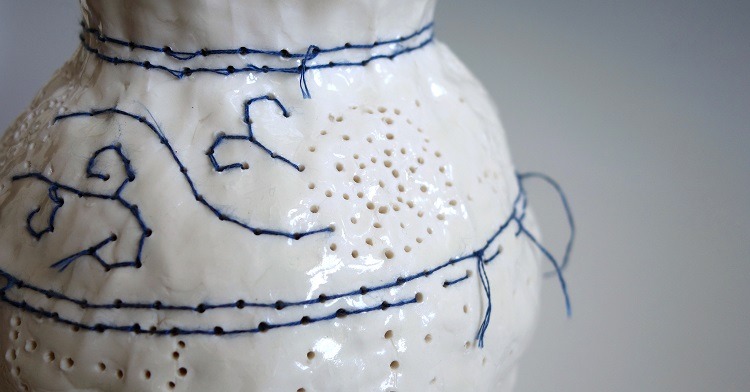
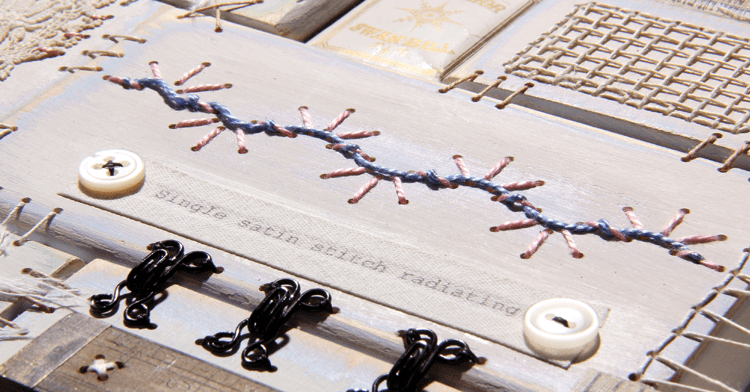
72 comments
Fiona Matthews
what holds me back is I have no sewing skills and don’t know what to make. If ever I do think of something to make, I don’t know how to.
Nilda Frenkiel
Qué problema!!! He encontrado parte de mi, en cada una de las cartas enviadas. Actualmente me encuentro sin real intención de comenzar algo que valga la pena y pensando que puedo hacer dentro del Arte Textil o lo que he realizado durante parte de mi vida a partir de 50 años, Arte en Pintura sobre Porcelana. He competido en varios países y obtenido varios premios. Hace 4 años me operaron la mano derecha y ya no fue lo mismo, lesionaron el nervio y afectó a 3 dedos y mi firma ya no es la misma. Por esta razón dejé de pintar porcelana y me dijeron de hacer un curso de bordado con puntadas. Me llamó la atención y me anoté. lo que hice me encantó era la 1era. vez que hacía algo así sin pensar que hago ahora? y seguía sin ningún plan previo! me encantó!!! Y fué toda una pelea con mis dedos llegar a agarrar la aguja y mantenerla. He visto lo que hace Sue Stone y me maravilla.! En algún momento haré algo y espero no defraudarlo. GRACIAS!!!!!
Catherine Grimaldi
I could really relate to most of these excuses for not beginning work. These articles are fantastic and I have just take a t-shirt from a charity shop to embroider a design on the front a a starting point…
Anna
The main issue that blocks me is “what will I do with the article once it is done”. I am pretty much a minimalist and do not like a lot of “stuff” in my environment. Something I make needs to have a purpose, it needs to be sold or made for a gift. This is what holds me back more than anything else. I do sew most of my clothes, so there is a reason in that, but my other art I don’t work on often, I wish I could get through this thinking.
Dana
Ok, this article is exactly what I needed today. I’m not a textile artist per se, I hand quilt my quilts and I do counted cross stitch and weave rag rugs on a homemade loom. My main artistic endeavour is graphite and watercolour.
I am thrilled I stumbled onto your site. It is the inspirational jolt I’ve needed. My creativity has been stagnating, I realized in horror, for 15 years now. Always tomorrow. I’m always afraid if I go back to it, I will discover I lost my skill, so if I don’t do it, I’ll never know. Textile art looks amazing. It’s something I never considered. I’m going to start, today.
Eat the elephant one bite at a time…
Moira Lennon Roach
I found your article very interesting. I have been a knitter for most of my life. I would knit, and crochet, on and off over time as they caught my interest. About two years ago I taught myself to knit socks using a book. I then knit socks pretty avidly, playing with different patterns and stitches, until about six months ago. At that time I heard about entrelac and figured out how to knit it and made a blanket. I then ordered some yarn and was going to start a blanket for a friend. When the yarn arrived I just couldn’t start knitting. Every time I tried the yarn and needles just didn’t feel right. It was like I was learning to knit all over again. Since then instead of just not being interested in knitting like in the past, I feel like I am missing something that I enjoy. I read your article hoping that it would give me an idea of how to fix this “knitters block”, but I really don’t think your reasons fit my situation. Is it possible I have burnout because of how much knitting I’ve done over the last few years?
Agata
Thank you for this text. I am not artist but I like to stitch 🙂 And these words are true also for non-artist. This is a first time in a long time that I feel I am not alone with my problems. Thank you again.
Joyce
I’m going to add my two cents. Great article!
I have recently realized I need the structure.
I have many interests but decided to focus on three this year which has helped a lot.
Thanks for this article, and all comments above, wonderful inspiration.
I’m not interested in selling. I don’t see that has “success”. “Doing” to the best of my abilities, with what I’ve got, where I am, is succeeding in my books. My bulky has been strong lately, but I’m fighting back.
Looking forward to the next article.
Joyce
Gill Dixon
Its very hard to find time to create work when working full time. At the end of a long day, the lats thing you might want to do is get out needle and thread and start to stitch. Its hard to sew by artificial light during the winter and in the short UK summers it feels idiotic to be inside sewing while the sun is shining outside. So, don’t beat yourself up about it but have a little bit of simple sewing on hand that doesn’t require intensive thought. If you make cross stitch, tapestry or something that has infill or a plain background, that’s ideal. The mechanics of repetitive stitch is usually enough to get you into the ‘zone’ and turn off all the analytic side of the brain. I find it usually frees the mind enough to start generating other ideas for work. I always have at least 70% more ideas than I will take through to fulfilment.
I also find it a good idea to set targets, e.g, a group exhibition or even a solo show but make sure you allow enough time to produce the work otherwise you WILL end up sewing by night into the small hours.
Gail
I’m just like everyone else who has commented. Four years ago, I taught myself wet felting. I’ve made a few scarves and bags, but that’s it. I’m even blessed to have bought a house 3 years ago with my own craft room. I’m retired, yet I never seemed to find the time to felt, and would even complain about it. I knew it wasn’t really true. If I’d really wanted to I could have found time. Well, recently I enrolled in an 8-week online felting course. it is very demanding with great techniques that I’m learning. Guess what? When it became a priority, i found lots of time. I’ve been felting about 5 days a week for the last 6 weeks, and LOVING IT! I think (hope) I’ve broken the spell of excuses. Hopefully, once this class is over I will continue to make art, although not this intensely. Thanks for the articles.
Francesca
Very useful article. I’m also trying to get through all these issues, but the worst problem for me is that I don’t have a direction, I don’t know where to place my work, because I have just started and made few minor exhibitions, but I have no idea of how to find a gallery or someone that can help me to place what I do, or at least giving advice or telling me what I do wrong. I don’t want to be a famous artist or whatever, just want to find an outcome for what I do. Here in Italy textile art is not really known, and this also makes everything more difficult.
Terri
Of course I thought I was the only one going through this paralysis. And because of this I thought that I wasn’t good enough. It took becoming unemployed and having time on my hands to start the creative journey. There were no excuses about time or energy. And then I realized that my artistic journey is subjective. It’s MY art. It makes ME happy. That is enough to start. But I couldn’t start. I couldn’t trust my instincts. So I organized. A diversion to be sure because I love to organize. Eventually I heard a friend say to me. “FOCUS!” I had said it to myself but since I wasn’t trusting myself, that directive didn’t hit the mark until someone else said it. I’ve moved on and I continue to move. Knowing that I’m not a freak has released me. This article further confirmed my growing into a good direction. Phew.
Karen
Thank you for the article …it was such a good read and I can relate to many aspects … I am an art and textiles teacher and have been teaching over 30 years and have given so much support to all my students that I have forgotten about my own creativity and work …..
Lynne
This is a wonderful article–one to refer back to! I am battling a number of things: getting old, health concerns, too many projects, a very cluttered home, no real workspace. Some days I am incredibly creative, other days overwhelmed and trapped. I’d love to have a better organized life. Thank you!
Fon
Thank you for very helpful vdo, i really need your help. X
ruth
thank god there are people out there like me!!
Don’t usually fess up to being a textile/storlelling lover of’ as it used to make objects’ as it made me feel ‘flaky”..
Now i am going to own it,share it(applying for casual teaching work today),and aim to save for the next embroidery workshop at the local art centre!
thanks for the inspiration.Ruth
Tani
My problem is I don’t know what to do with the stuff I make. I quilt, embroider, paint and make jewelry. I can only make so many things for my very few family members or myself. If I make and make and make – and then store it all – I will run out of room in my small home. (Plus I don’t want to leave all that to some poor soul to deal with when I pass.) I love to make, but don’t see the point if there is no need for it. Maybe there is a low energy/low cost way to sell things. Plus some things (quilts) cost a lot to make and no one wants to pay what they’re worth. Anyway, that’s what keeps me stuck.
Susan
Tani – I had a similar problem. It changed when I started thinking big, my projects have become bigger by pulling together the smaller pieces – a good place to start is to look at your pieces for repetition (colour, shape, whatever) and placing them together to see what you get. I also group mine in a story sometimes, for example pieces that make me think of my old dog and my new young one or pieces that I made around the time my dad passed. What’s left of my boxes of ‘finished’ things are now part of my stash.
Kathy
I make quilted throws and other smallish quilted things, then donate them to an animal shelter to be sold at fundraising bazaars, etc. That way, I am not accumulating them, and they are helping the shelter and giving pleasure to those who buy them. Kathy
Claire B
Thanks so much for this article, just what I need at this point. I’ve copied some of the inspirational thoughts given by some of the featured artists, printed them out in large font and pinned them to my board so I see them every day. I’ve also downloaded the Workbook, have it printed and will use it to get me moving immediately.
I actually feel more motivated with just having made these steps.
Sinara Maria Boone
Gratidão imensa por este texto. Me fez repensar a caminhada artística e retomar o rumo. Parabéns pelo blog, sempre inspirador. Eu estou com “paralisia artística” e seu texto foi um “remédio”, aliviando a minha dor. Abraço! Sinara.
Joe
Wonderful! I’m so pleased it’s helped you get going. Let us know how you progress. Joe
Carol K Boyer
Great Greta! Keep up the encouragement.
Patricia
Thank you for all your articles! You make an amazing work!
sofia verna
…great words of encouragement..just start and get going..ideas evolve as you work ..you don’t need outside inspiration, just look around you in your studio..
betty
Joe, what a timely stumble – into your restorative words. You spoke my excuses ” I can’t …. because…..”. Fell into a pit of doubt, sadness, frustration and have been fighting to overcome. Some successful baby steps recently. This article was a well found ray of daylight….. it will be re-read often for the next “however long” until I begin to not just believe again, but DO again. Thanks…. you really spoke to me. betty
Joe
Hi Betty – thank you for your kind words. Baby steps are indeed still steps – keep going. You can do it.
Sheila Meyer
Great article – direct and precise.
I’ve found that joining in a 100 Day project (choosing one thing to focus on for 100 days: a technique, a craft, a specific object, etc.) helps a lot. I’ve been invited to join several this Spring but have decided to do 100 days of completing unfinished projects. They include knitting unfinished sweaters and new designs I’ve been carrying in my head for a while, embroidery (100 words) and creative mending projects that have piled up and awaiting a needle. I also want to do research on symbolism in different cultures and have books and articles in piles…
Many of these projects have come to a sticking point because I am fearful of ruining something that started out well or because the size of the project seems overwhelming. The points in this article are very relevant to completing my projects.
Joe
What a brilliant idea! I love the idea of 100 days of tying up loose ends – that could apply to all aspects of life management. You’ve inspired me.
As for ruining something that started out well – if you do, then you’ll learn from it and move on. Better that, than it sitting unfinished I think? But don’t try and do it all at once – remember the tortoise and the hare!
Jane Jackson
Four years ago I gave up my “proper” job and fulfilled my dream of becoming a full-time professional artist. Hurrah! Then a year later my husband gave up his job to look after the prints & cards side of the business. Hurrah again! We are also very lucky as we now earn enough to support ourselves. But …..unfortunately as time goes on I find the pressure of both our livelyhoods being dependent on my creativity increasingly difficult. I feel that I must always make work that is comercially viable. This makes me very anxious a lot of the time and has caused “artistic paralysis” on and off for the last 2 years. I’ve been beating myself up about it (really helpful I know) and feeling such a failure. So it’s eally good to know it’s not just me. I’ve also downloaded the PDF. Thank you!
Joe
First of all, congratulations on following your dream.
As for beating yourself up, we all do it. I wonder if there’s a way to balance your commercial work with the art that you feel more passionate about? Or a way to scale the commercial side of your art so that it is more productive? Do you have a website? I’d love to take a look.
Val
Another really great article, I do an awful lot of ‘getting the room ready’ when I have done that I think only got a few minutes oh why bother. I now understand the symptoms and I am going to fix it.
Jules Abbott
I agree with all of the above. Thanks so much guys for providing interesting, encouraging & pertinent articles. They truly help in this confusing world of pursuing one’s passion as does every single person’s comments about this first world problem!
Gillian
Thank you for a timely and inspiring article. I definitely spend more time ‘thinking’ than ‘doing’ – and it can lead to feeling overwhelmed instead of inspired. Time to remember why I love creating and get on with it.
Kathleen
Thank you for these articles. I’m one of the lucky ones who do not care what others think; I think it comes easier with age. I’m part of a gallery that specializes in Native American and Southwest art. I let them know at the beginning that wasn’t my taste and was sure we’d get customers who might want something different. I’ve sold some unusual and experimental pieces, so I’ve proved my point. I’m doing embroidery and after reading last weeks article, am limiting my stitches on my current piece to just a few. We’ll see what transpires as I give this a try. Thanks again for the good ideas!
Joe
Hi Kathleen – wonderful that you don’t care. I so admire people like you! I’m getting better as I get older too, but I’ve spent a long time worrying what others think about what I put out into the world. It’s such a waste of time and energy. I’m delighted that last week’s article has inspired you to give limitations a go. All the best, Joe
vicki miller
Remember that not every piece can be a masterpiece, even the masters had duds.
Emma
I’m So glad these articles have been written! I can relate to almost every point made and I’ve not made a thing for over 15 years since graduating from my textiles degree. I think about starting all the time but that inner bully wins every time and as yet I’m still to try and start, but it’s so comforting to know that there are so many others like me out there or at least similar and find starting an issue. It gives me hope that I’ve not ‘missed the boat’ and if I just try to make something for me then I might just get back on the wagon and start creating again. I feel a part of me has been missing for years and I don’t think it will let me rest until I’m doing it again regardless of what others think of it. I hope that this will give me the courage to try.
Joe
Hi Emma – have you read Violet’s comment above? I think it’s time for you to go for it!
Sue
Such a timely article for me. Thank you for clarifying the path forward.
Cynthia
Another thing that can paralyze you, is the fear that your work isn’t good enough. Your work is subjective and doesn’t appeal to everyone, I found that out recently when I showed a small selection of my work, and the friend who helped me hang it said that it was ok, she quite liked some of them. I felt quite deflated although I wasn’t wanting people to gush over it either.
It also doesn’t help when going around a show, be it art or quilts, that the unbidden thought comes to mind, ” I wish I cold do that.” Well, I now try not to think that as it wouldn’t be “my” work if I could do the same as someone else.
A good tip another friend gave me was not to spend more than 15 minutes tidying your studio, as that will also stifle your creativity. A rule I follow to this day.
Janet
For me, getting into my studio is the most important thing. If I don’t have a specific project I am working on, tidying up is useful (and always needed). Usually I will come across something that I had meant to do or the perfect fabric to get a project out of my head and into the real world.
I also try to regard each project as an “experiment”, a learning experience and disposable. I can always do another version!
Violet Shirran
Great article guys, your really on a roll!
This was me a few years ago! Working full time, not getting a chance to do what I wanted and jealous and grumpy with everyone who WAS doing what they wanted!!
Went back to college in the evenings to do embroidery, met folks into the same stuff, had to get sketch book and assignments done on time, had to exhibit at the end of the year!
Fast forward 4 years later and I’m teaching only part time now, got a little studio (shed!!) and approach my work like I’m going to work for someone else, up early and work all day.
Absolutely skint, but you learn to prioritise and do without a lot of stuff, buy fabric second hand , don’t get distracted by shiney new techniques that cost money but am happier than I’ve ever been!!
Exhibiting regularly now and am involved in a textile group.
Go ahead, take the plunge… you won’t regret it even though you’ll be working longer hours for less money!!
( Have to say I found the ” Artists Way” a great help when I started. She does talk about god a good deal but I just substituted the word ” nature” every time she mentioned god and pretty soon it didn’t bother me!!! )
Violet
Joe
Hi Violet – this is an incredibly inspirational story. Massive congratulations. And being skint is bearable if you’re happy, isn’t it? I’ll never forget training in the performing arts – I had mounting credit card debt but it was the happiest time of my life – doing what I was meant to be doing every day.
I loved The Artist’s Way too – I replaced ‘God’ with ‘the Universe’ when I read it!
Limbania
What a wonderful way to nudge creativity! Reading this felt like a reminder. Deep inside somehow I knew it but someone pointing at it (and me reading it) helped me to find the courage to get creative and make art. Thanks a bunch for helping artists/creators to get or continue creating. So blessed to have found you. Hugs.
Rachel Biel
Excellent and motivating! I have a really tough time with time management. Every morning I am faced with a hundred emails to sort through. Most of it is delete, delete, delete, but there are always tasks that come with them and if I don’t do them right away, they hang there and I get behind.
Then, there is a lot of interaction on Facebook. The political situation here in the US has doubled that and I read daily as there is so much happening at a very fast pace and a lot of misinformation to sift through. By the time I’m done with these things, I have no excitement to write or do other things that I need to do. I need a clone! But, somehow, progress happens.
I do spend a couple of hours every night watching some favorite shows or a movie and doing handwork. This past year I have been teaching myself knitting and crochet and am loving it. I have ideas for larger works, but not the energy at this point.
Thanks for the post!
Joe
Yes Rachel – it’s so difficult to stay on track with so many distractions baying for our attention. In terms of emails, I try to do a quick sweep. Anything that can be answered in less than 5 minutes, I deal with there and then. Anything that takes longer or is truly urgent, I flag. Then I deal with a whole batch together once a week in a later session. I’ve had to start being harsh and ignoring some otherwise I’d never get anything else done!
And in terms of news, again I try to batch my consumption. So I don’t allow myself to read anything news related or watch any news during the week. At the week end I catch up.
I’m still very much on a time management journey myself but these things have helped me.
Hope you’re well, Joe
Emma
I found the answer to emails was to unsubscribe to everything that wasn’t from friends or family or relating to home management or the day job, and blocked the spam where possible. This cut my emails from 40-50 a day to 8-10
Mary Larkin
Has someone been watching me? Thank you for this much needed article. I’m away out to my shed to make a mark.
Tania Denyer
Reassuring to know other artists are with me in spirit, whether at times of challenge or of success! I often play with small quilted works simply to see what comes of it. These can (but not always) lead to larger works. It allows me to play with design and involves less fear and intimidation than attempting a large piece of work right out of the gate 🙂 Thank you for this article.
Monique
Wow. I really love the articles and this particular article on how to identify blocks and get started. I appreciate the generosity of the authors in spending their time putting all these amazing resources together to push people like me along! I have big dreams but accomplish little due to work commitments and fear that no one will like my work. Im going to make the commitment to creat consistent habits to devote time to my art. Thank you for the wonderful articles each month!
Trish Haskey
I think that one thing that keeps people from moving forward and working on their art of choice is their fear that they will not be successful, and yet, we seldom ask ourselves the direct question “What does artistic success mean to me?” Sometimes people feel that unless they sell their art that it is not meaningful or successful, that it is perhaps not even worth doing if they do not have validation from others. When I recently asked myself why my art matters to me, I was a bit surprised at what I found out. #1 I love the process itself, being in “flow” is a form of mediation, calming and pleasurable on its own merits. #2 What comes about as a piece evolves and grows is amazing, it is as though I begin within myself and then tap into that which is beyond myself, the unpredictable source that we all can access. This collaboration with what I call the divine gives me a feeling of co-creating that is wonderful to experience, and I am thrilled when a piece surprises me. It is like I start walking on a path that I cannot see more than a step or two ahead of me, but as I keep on the next step on the path appears, and leads to a destination unimagined and unexpected. #3 I make things that I truly love to look at and have around me. Because I use symbols that are personally meaningful, the things I make connect me to my past, present and future in a powerful and satisfying way. #4 When I am no longer alive, I like to think that my family, especially my grandchildren, might enjoy having some of my art because it reminds them of me. All the things I value most about art don’t have anything to do with what those outside my immediate family think about it. Being clear about my motivations helps free me to just enjoy making stuff. And that’s real magic.
Annette Mitchell
I am new to this and this comment was so totally what I needed. thank you Trish
Joe
Wonderful! You’re right ‘success’ and ‘failure’ can feel like such absolutes until we stop and ask ourselves what is my interpretation of those words? I don’t believe anything is a true failure – just a learning curve. Thanks for the comment. Joe
Sue
Hey Trish … Did you pinch the words out of my mouth? Your comment is EXACTLY how I justify my creative process. Furthermore, I’ve discovered that if I make something the I love then my joy in it communicates to my viewers. I’m going to copy and paste your comment at the bottom of my printout of this article… ok?
Trish Haskey
Sue, have been out of touch and just read your comment tonight…so glad that mine was useful for you! Of course you may copy it!
Gill
It’s nice to know I’m not alone ! Just reading this article has inspired me to be creative. It’s a great website. Thank you ! x
Ruta
I’m not a fiber artist but I work with beads and metals. I haven’t been in my studio for 2 years – I can relate to many of the reasons in your article about artistic paralysis. Will just have to get started – and start small. Thanks for the incentive.
Tara
Hi Guys
Thank you for these two articles! They have been an inspiration and a motivation. I’m off to get to work right now.
Tara M. Designs
Roxanne Lasky
Thanks for breaking it down, Joe… A must share.
Elizabeth Peters
When I first started reading this article, I thought omg how is it they know me like this? This has been a very good read & I’ll be downloading the PDF. Thanks x
Lindsay Olson
Great article.
There is so much shame attached to failure. Seth Godin’s book is a good reminder to take the road less trod.He also unpacks the cultural assumptions that trip artist’s up most often.
https://www.goodreads.com/book/show/15843041-the-icarus-deception
Marian
Thank you. Very helpful guidance. I am having trouble getting started, this will help me
Miriam
This is as timely as can be. Its so comforting to know that others have this issue to manage. I appreciate the advice, this is such a mentoring and encouraging website. Thank you so much guys.
Chrissie
Thanks just off to start sorting my fabrics have a project in mind
Sarah Harmer
this is another great feature and I can identify with most of it but do agree that doing a small piece regularly is a good way to get going. The problem I have is me wanting to make something that I would like as opposed to making something that I think others would like…
Does anyone else have this?
Lise
‘@ Sarah, If you are making in order to sell then what other people like really matters, financially.
If you have an income, then you can explore your ideas according to your taste. If you don’t seek validation then other opinion is secondary. Easy to say!
If you focus on your ‘questions’ (argh, but the word does convey a meaning in shorthand) then your technique will improve and your ideas gain clarity/ evolve and others may also like what you make.
Now, having said all that, I find it hard to see if my product is nice or naff. There’s a thin line between interesting/ joyful/ beautiful / elegant etc, and not fit because dull & boring (leaving aside whether the technique is good).
Joe
Hi Sarah. A lot of the artists we chat to here at TextileArtist.org feel that to be truly authentic they must work to their own tastes rather than the tastes of others. I think trying too hard to please others can be a mistake and hold you back from creating work that speaks strongly in your voice. Mum (Sue Stone) went through phase of making sea scales to commission because they sold well but she hated doing them. It wasn’t until she gave them up that she started to really discover her signature figurative style!
LISBETH
How I can relate to that! If I continue in the flow of requested commissions, without contemporarely dedicating time and space for elaborating, exploring, experimenting, listening to my heart— I kind of feel lost.
Thank you for a great article!!!
Tineke
Sure, I have to remind myself constantly that I am working on a small piece and it doesn’t matter if no one else likes it, it takes practice to remind yourself of this all the time if need be, but it does have the desired effect and the pieces can bring real joy in the end…
Annette Mitchell
Thank you for that comment. I am new to this and that has been a worry even though I know in my mind to
ignore the thought. I shall get going tomorrow.
Elizabeth Peters
Yes, I’m like that. I’m always making things I like. I find it hard to make things that others like. I am no good with a set brief or a pattern.